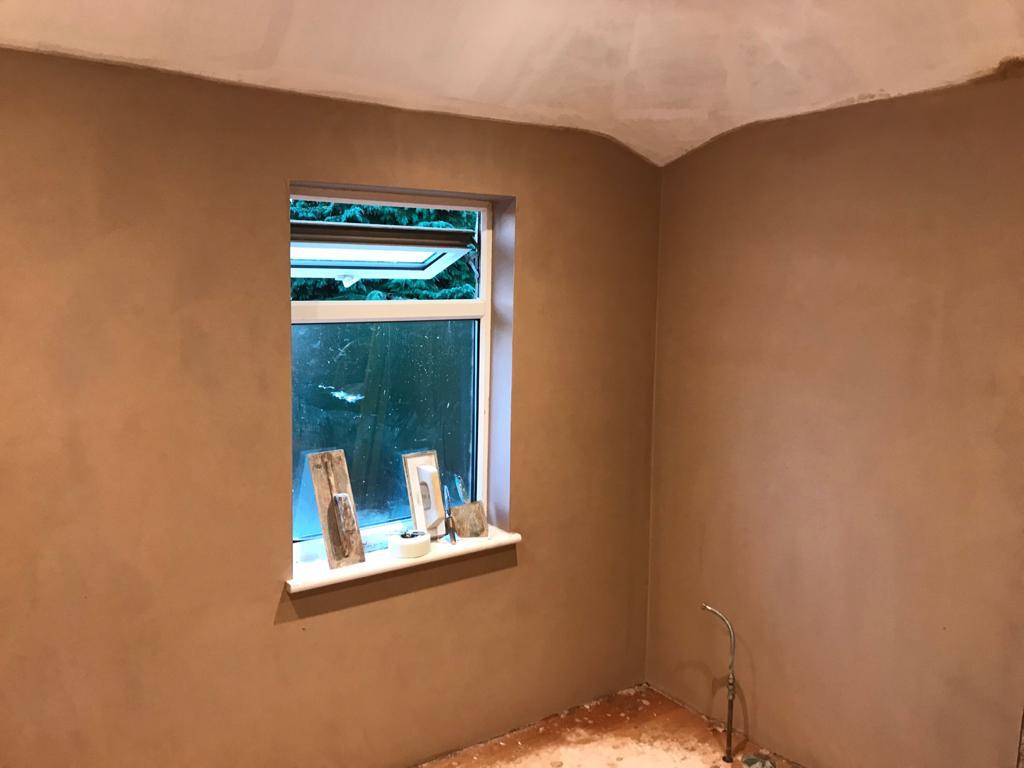Over time the plasterwork in your home or commercial property may become rundown, cracked, discoloured, or damaged. Not only can this be unsightly, but the underlying problem may have more serious repercussions for your property (for a great guide on the different issues you can have with plasterwork head over to The Craftsman Blog).
But damage isn’t the only time you could require new plasterwork. You may have built your own home, added an extension, or remodelled part of your property. If you have your internal walls may have moved, been rearranged, become damaged, or new ones may have been created entirely.
In any of these cases, you will likely need to have wall surfaces skimmed to create a smooth, level, clean surface that looks great.
Here at J & H Lynch, our plasterers have years of experience skimming properties in the Oxford area. We understand Oxford homes and know how to get the right finish that looks great and lasts. Give us a call today and see what we can do for you.
What is Skimming?
Have you ever noticed how smooth new walls look? Have you ever wondered how the rough patchwork of plasterboard and stud walls inside your home ends up looking like one seamless, level surface? Well, wonder no more because the trick to clean smooth walls is something called skimming.
Skimming is a plastering technique where a thin layer of plaster material is administered to a wall over the existing surface (plasterboard, timber, brick, etc.), to create a smooth, level, and clean top coat. This can then be decorated with paint or wallpaper and things like picture frames, etc. can be hung from it.
For full details of the skimming process head over to moderniser.co.uk.
Does the Wall Need Preparing Before Skimming?
Yes. Before a surface can be skimmed it must be carefully prepared to ensure the skimming material bonds with the underlying wall structure. This is essential to prevent future issues like peeling, cracking, or flaking.
Any loose or crumbling plaster will need to be removed as well as any foreign material. If the skim is to be applied to bare brickwork, then it must be cleaned and prepared correctly for bonding.
The wall should only be skimmed after the surface has completely dried, which can lead to waiting times between the different stages of the skimming process. Skim can be applied to painted walls without removing paint, but some types of paint may cause plaster to peel away at a later date.
All our professional plasterers here at Lynch Brother Homes are experts at preparing surfaces for skimming and will make sure everything that needs to be done to ensure a smooth long-lasting finish is done before any plastering takes place.
Can You Use Skimming to Cover Up Wall Issues?
The plaster material used in a skim will only be approximately 2-3mm thick once applied and can cover small issues found in the underlying surface. Larger problems, however, will need to be dealt with before skimming or issues may develop down the line.
Preparation is key to a good skimming job, which is why we always recommend using a qualified professional (like our plasterers) to ensure the best finish is achieved.
Could I attempt Skimming Myself?
We wouldn’t recommend trying to skim your walls or ceilings yourself. Skimming is an extremely difficult job and considered the most skilled aspect of plastering work. Getting the skimming material onto the wall is easy enough but knowing how to get a smooth, level finish takes years of training and practice.
Here at Lynch Brother Homes, every one of our plastering team is experienced, qualified, and highly trained in the art of plastering. Leave your skimming issues to us. You won’t be disappointed.
How is Skimming Different to Plastering?
Traditional plastering and skimming are two different skills within the plastering profession. Plastering in respect to full wall surfaces is a large job that takes time and involves preparation followed by layering three different coats of plaster, each of which will need to dry before the next one can be applied.
Skimming is a much-shortened process and is a result of evolutions in dealing with walls and the materials they are made from (like plasterboard which gives a relatively smooth surface from the outset). Skimming generally takes just one application reducing workload and drying times immeasurably.
Is Skimming Always Necessary?
Not necessarily. If an existing plasterwork wall is in good condition (that is it is smooth without cracks, flaking, or chips) then skimming may not be required. If the wall is made from or covered in a layer of plasterboard or drylining then you could choose to decorate directly onto the board without applying a skim. This will create a relatively smooth matte finish, but nails, screws, and joints may be visible unless they are taped.
For a smoother and cleaner finish, a skim of plaster can be applied. This is often favoured by many customers due to the superior finish it creates and the added layer of soundproofing it provides.
If you are unsure whether skimming is required on your walls, give us a call for free, impartial advice.
How Do You Skim Over Plasterboard?
Before plasterboard can be skimmed, the joints must be filled and covered by tape by one of our plasterers. This ensures that the wall appears continuous, with no gaps between boards. Skimming material is then applied to the wall in a thin layer to create a smooth glossy finish that looks amazing.
Why You Should Use Us for Your Skimming Services in Oxford?
Here at J & H Lynch, we offer a wide range of domestic and commercial plastering solutions including professional skimming. All our plasterers are qualified, skilled, and fully-trained in the art of plastering to ensure customers’ needs are met.
We cover the entire Oxford region and offer affordable solutions to all customers. No problem is too big or too small for our plastering experts.
If you are looking for skimming services in Oxford, give us a call or leave a message on our contact us page. You won’t be disappointed.

